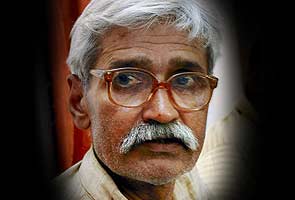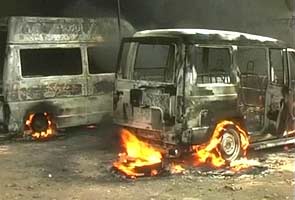
A violent backlash that began in this part of north-western Bihar has now spread to other parts of the state. Mr Mukhiya's angry supporters have vandalized public property, burnt buses and set offices on fire, smashed windows of the Patna Rajdhani Express and they even heckled and pushed Bihar's police chief DGP Abhay Anand, when he visited Arrah. The protesters want Chief Minister Nitish Kumar to visit the site where the Ranvir Sena chief was murdered and say they will not allow the body to be taken away till he does.
The Chief Minister said the matter would be investigated as all such matters are."I appeal to people to maintain peace and to have patience. Proper investigation will be done and those responsible will be punished," Nitish Kumar said.
His party the JD(U) has said Mr Mukhiya's killing appears to be a political murder. The state's deputy CM Sushil Modi has promised an investigation and punishment for those who murdered Mr Mukhiya. He has also appealed for calm. Former chief minister Lalu Yadav has sought a CBI inquiry into the killing.
In the 90's, the Ranvir Sena played a role in many of Bihar's infamous massacres which targeted 200 Dalits including women and children. The Sena or army was formed in 1992. Its victims were usually landless labourers and peasants. The Sena said it was committed to protecting the rights of farmers, and was avenging the murder of members of the upper caste, often land-owners, who were killed by the Naxals during their insurgency in Bihar in the 1980s and 90s.
The Ranvir Sena's deadliest strike was in the Lakshmanpur Bathe area in 1997, in which 58 Dalits were killed.

Maintaining law and order after his murder will be a critical test for the administration of chief minister Nitish Kumar. When he was elected in 2005, one of Mr Kumar's promises was that he would rid Bihar of its cycle of caste-based violence. Through a strong police force and administrative reforms, he has been largely successful so far.











0 comments:
Post a Comment